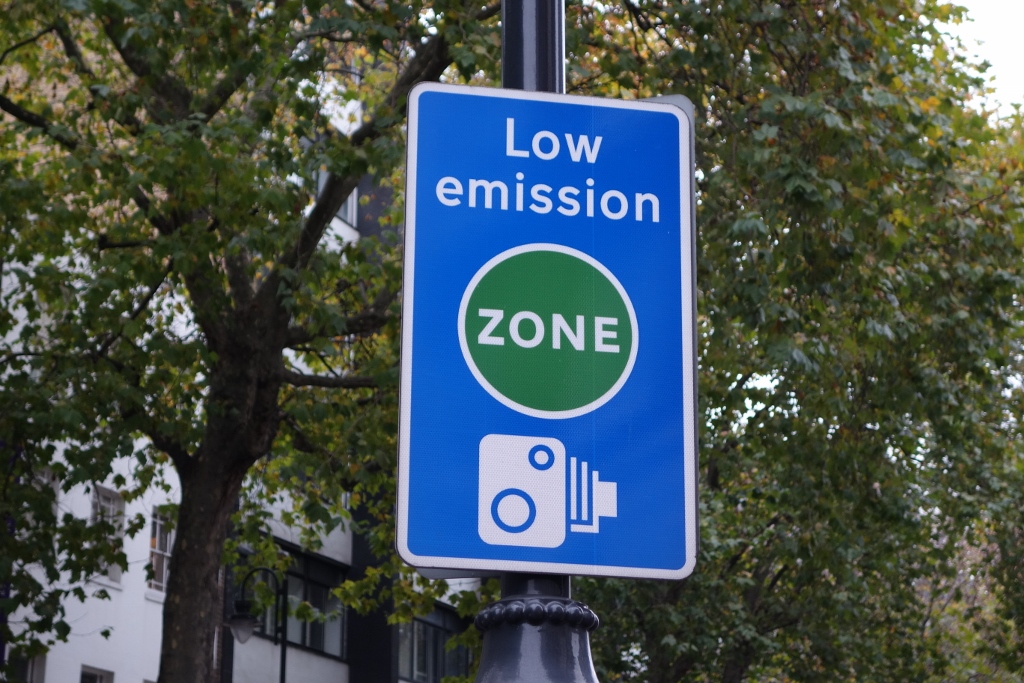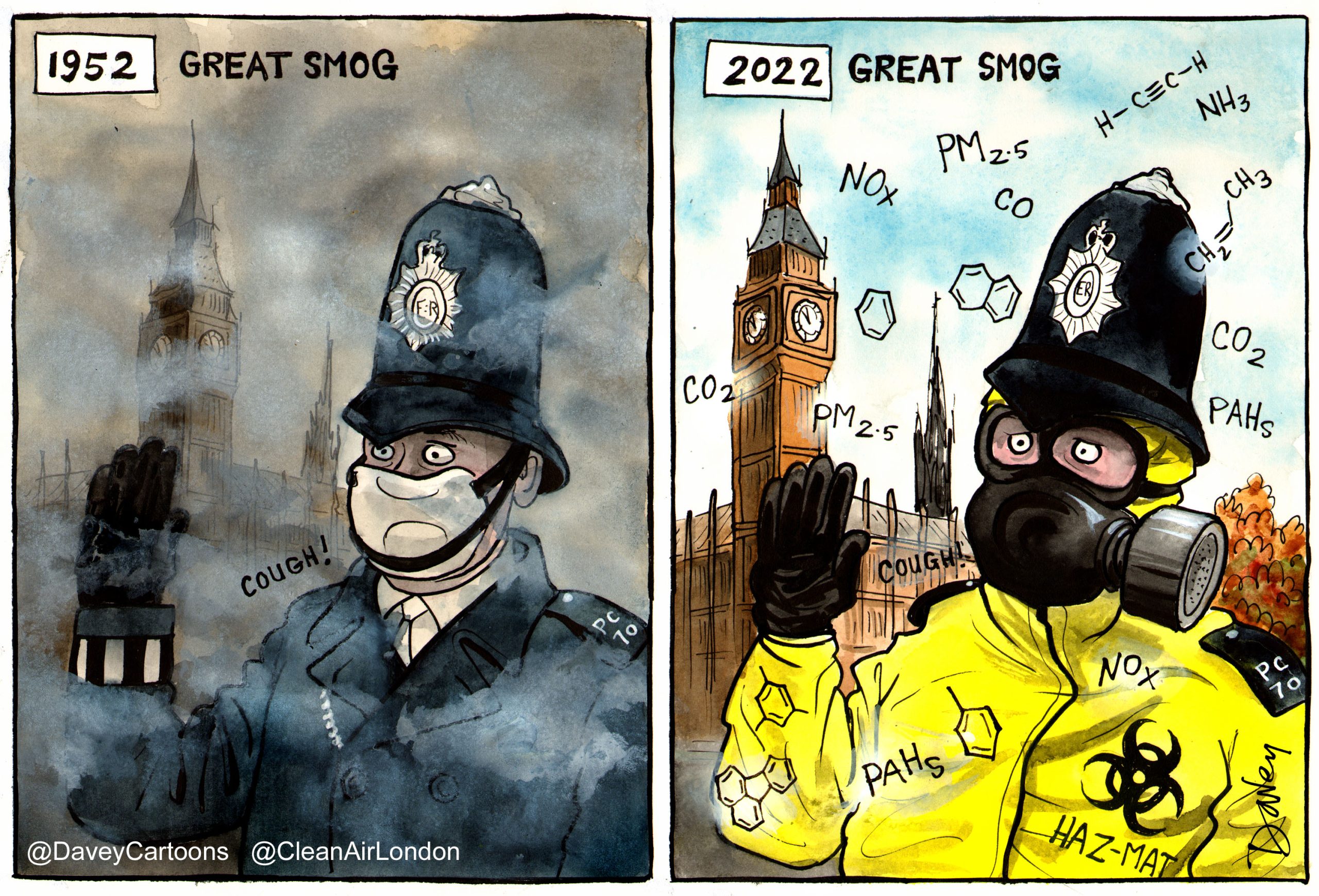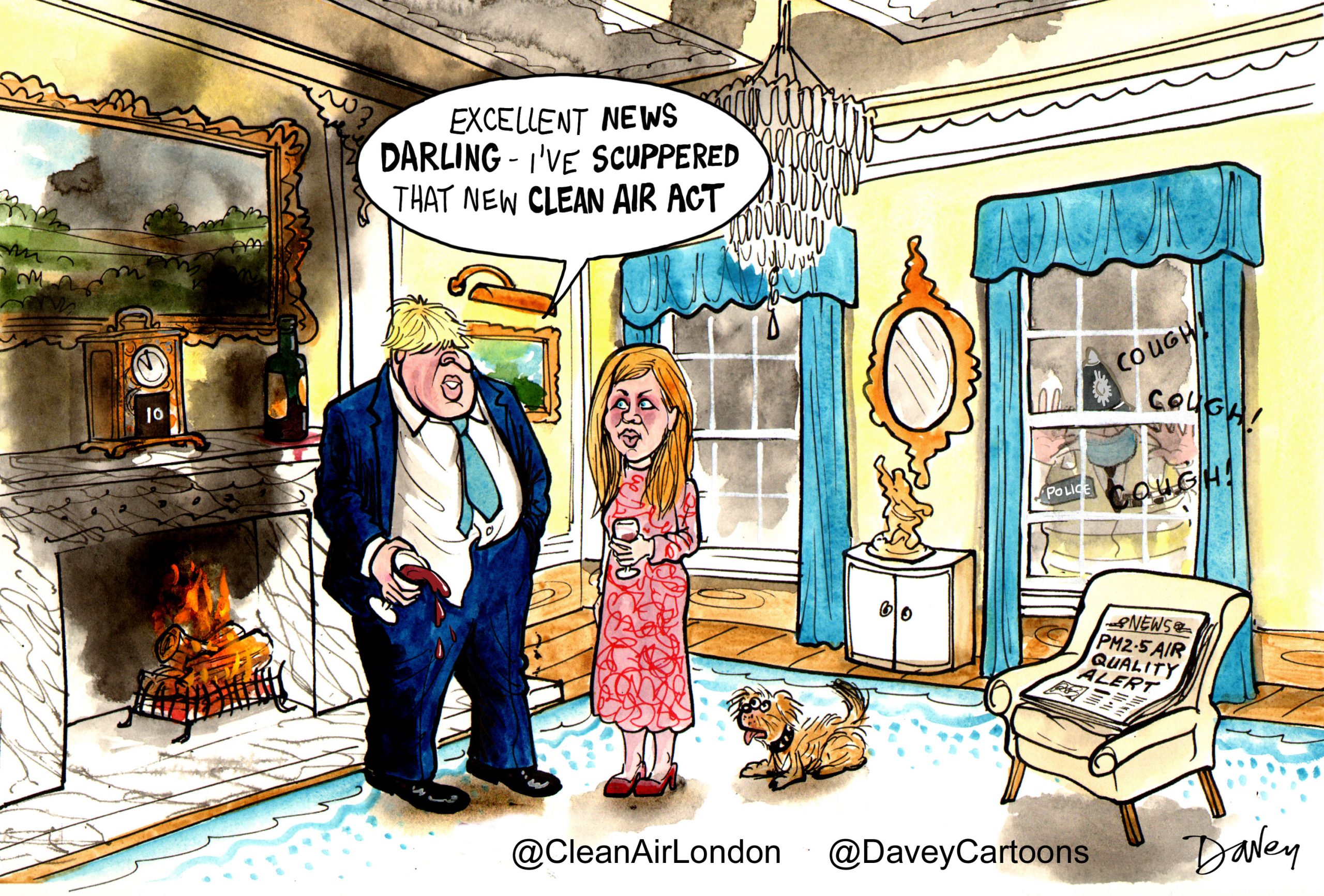New deal for taxi drivers that delivers the ‘Eight point transformation package’ proposed by Clean Air in London and the Licensed Taxi Drivers Association
Private hire vehicles must meet the same emission standards as taxis and pay the congestion charge by 2018 given they are not obliged to meet the accessibility and other standards of taxis
Defra must decide which new measures to include in its air quality plan and launch a 10 week public consultation on them by mid-August
This is the first of several ‘Manifesto’ bulletins from Clean Air in London in coming months
The London Evening Standard’s Clean Air initiative, focused on ‘clean tech’ solutions, is a catalyst for transforming our city as never seen before. Nationally, the Sunday Times’ Clean Air Campaign, focused on better monitoring of air pollution, easier access to information about pollution levels and more action to curb the pollution, is having a similar impact.
As well as rapidly increasing public understanding, policy announcements and exciting news from clean tech companies, a powerful cross-party consensus and call for action is emerging at all levels of government. Any Mayoral candidate not appreciating this change, or that the Mayor’s biggest single power and opportunity is over the transport system, is in for a nasty surprise.
Three Gordian knots must be cut if we are to protect public health by reducing nitrogen dioxide (NO2) concentrations in London from among the highest in the world. With little extra effort the same policies will sharply reduce fine particle (PM2.5) concentrations to meet binding limits in 2020 that will not otherwise be met in London.
- National Air Quality Plan
First, we need an air quality plan (Plan) from the Government in response to the Supreme Court’s historic judgment on air quality that shows how London will protect public health by complying fully with NO2 (and PM2.5) air pollution laws by 2020, not 2030 or beyond as currently
Clean Air in London (CAL) expects Defra to launch a 10 week public consultation on its Plan by mid-August that will close by the end of October to allow one month to consider responses and one month to obtain Government approvals and lodge the Plan with the European Commission before the Court deadline of 31 December 2015.
In practice therefore, all measures to be committed must be included in the plan by mid-August.
- Taxis and Private hire vehicles
Second, we need a new deal with taxi drivers and the owners of private hire vehicles that delivers two different propositions based on fundamentally different rights and obligations.
For taxis, we need to guarantee high customer service and accessibility standards in return for special access to London roads including bus lanes. We need also to address taxi emissions and the industry’s cost base and pricing structure.
The taxi turning circle requirement and proposed 10 year age limit must be scrapped as part of a package of measures that gives taxi drivers the financial help needed to get half of them into zero emission capable taxis by 2018 and nearly all of them by 2020. Scrapping the turning circle requirement would remove an unnecessary constraint and give drivers more choice over time in the vehicles they can buy and therefore put downward pressure on costs and prices.
In CAL’s opinion, the long-term financial sustainability of the taxi industry depends on reducing industry costs and prices relative to increasingly attractive mobility options such as walking and cycling, other public transport options, private hire vehicles, car clubs and car sharing. This will only be the case if there is sufficient competition between vehicle manufacturers to provide affordable taxis. Taxis are not iconic vehicles if their customer proposition cannot be defined in regulation.
Private hire vehicles are contributing increasingly to congestion and diesel pollution. We need them to reduce air pollution by meeting the same emission standards as licenced taxis by the same deadlines. They should no longer be exempt from paying the congestion charge (or emission charges) given they do not have to meet the customer service, accessibility and other standards required of taxis.
CAL and the Licenced Taxi Drivers Association (LTDA) set out our ‘Eight point transformation package’ on 3 February 2015. We made clear that the package is not an a la carte menu from which the Mayor can pick and choose.
- Emissions-based road charging
Third and most transformational, it’s time to embrace technology with emissions-based road charging that replaces the blunt instruments of congestion charges and ultra low emission zone fines in central London and the low emission zone within the M25.
The Mayor should begin working on a simpler, fairer and more effective charging system to be implemented by his successor by 2018. It should be based on the ‘polluter pays’ principle and be ‘revenue, cost and technology neutral’ for Londoners. The scheme should take account of:
- time of day;
- emissions;
- location; and
- distance driven by size of vehicle.
There would be one single daily payment, not two or more as currently planned by 2020, calculated using very simple parameters, most of which a driver would know before starting their journey: rush hour(s) or not; zero emission, petrol and new or old diesel; inner or outer London; and per kilometre by size of vehicle. Each emission standard should be technology neutral based on a blended rate of CO2, NO2, NOx and PM2.5 exhaust emissions to take account of greenhouse gas and air pollution impacts. The table below provides more detail.
This emissions charging mechanism should be used to encourage the freight industry to play its part by consolidating deliveries and avoiding deliveries in the rush hour when road space is at a premium.
Proposed framework for emissions-based road charging to be implemented by 2018
| Time of day | Location | Emissions i.e. quality | Distance i.e. quantity of fuel burn |
| Rush hour (a.m./p.m.) | Inner London | White – zero tailpipe | Size of vehicle |
| Not rush hour | Outer London | Green – Euro 6 petrol or CNG (not LPG) | Per kilometre |
| Yellow – Euro 6 diesel | |||
| Red – Euro 5 diesel | |||
| Black – Other |
By 2020, such a scheme should be based on actual emissions rather than manufacturers’ ‘optimistic’ claims and take account of the health effects of tyre and break wear.
By 2020, London should also be paying people to walk or cycle and charging everyone else ‘something’ to use public transport and more to drive.
Contactless payment and mobile phones are already making these changes possible. CAL is deliberately not specifying technology solutions as so many are possible e.g. tag and beacon, existing APRN cameras, mobile phone or contactless card technology or satellites.
People might be paid to join the scheme and then be charged as above. To protect privacy, a single weighted-distance measure might be transmitted at the end of each day for each participating person with the weighting based on the person’s travel by time of day, location, emissions standard (or mode by 2020) and size of vehicle. No daily GPS data or other journey data might need to be transferred to Transport for London.
Of course, other solutions are needed for air pollution but these Gordian knots must be cut now.
Quotes
Simon Birkett, Founder and Director of Clean Air in London, said:
“There are already signs that Rory Stewart, the new Air Quality Minister at Defra, is providing leadership in an unprecedented and very positive way within Government.
“Other leading Conservatives, such as Zac Goldsmith, Mark Field and Nick Hurd, are already helping to shift the political debate towards a vigorous cross-party discussion about the rapid implementation of ambitious clean air policies proposed by them or others.
“The Mayor is expected to announce his plans for taxi and private hire vehicles within the next month. The Mayor needs to understand that the ‘Eight point transformation package’ proposed by Clean Air in London and the Licensed Taxi Drivers Association is not an a la carte menu and he will only succeed if ‘once in a generation funding’ to replace the taxi fleet is used to insist on the scrapping of the turning circle requirement. The reality is that the taxi industry has no long term future unless it can compete financially with other ‘mobility’ options by increasing ‘choice’ for drivers and passengers and guaranteeing different propositions for the taxi and private hire industries.
“The time has come for emissions-based road charging. It is the simplest, fairest and most effective way to ensure the ultra low emission zone is delivered bigger, better and sooner. All Mayoral candidates should promise to implement it by 2018 in their manifestos. These changes would be turbo charged if the Government gives London the power to collect vehicle excise duty for the Government (or itself) in whichever way it chooses. We should listen to concerns about privacy but not be distracted by them. Anyone concerned about privacy issues should benchmark their concerns against existing transport and related security measures and consider CAL’s proposed protections.
“Of course, we need other action on air pollution. In particular, we need: the implementation of all the Environmental Audit Committee recommendations and excellent air pollution policies in the Liberal Democrats’ General Election manifesto; action on buses; the Clean Air Act updated for modern fuels and technologies including local generation (e.g. biomass and diesel), non-road mobile machinery and restaurant emissions; joined up thinking by BIS, DCLG, DECC, Defra, DfT and the rest of Government; the pedestrianisation of Oxford Street and other areas; and action on agriculture, shipping and aviation emissions nationally and internationally.
“Clean tech offers great opportunities. But it must be combined with lifestyle changes and backed by political will. Currently we focus too much on finding and laboriously assessing ‘technology silver’ bullets which cost more and more to achieve less and less. Instead, policy makers and political leaders should prioritise lifestyle changes and the banning of the most polluting sources before considering short and long-term technology solutions to air pollution.
“Clean Air in London has never been more optimistic. As well as the Mayoral election in 2016, next year will be the 60th anniversary of the Clean Air Act that transformed London and made it a world leader for nearly 15 years.
“We must grasp a similar once in lifetime opportunity to transform our transport system and make London the healthiest, most liveable mega city in the world.”
ENDS
Notes
- Statutory Inner London boroughs
Camden, City of London, Greenwich, Hackney, Hammersmith and Fulham, Islington, Kensington and Chelsea, Lambeth, Lewisham, Southwark, Tower Hamlets, Wandsworth and Westminster (13)
- Statutory Outer London boroughs
Barking and Dagenham, Barnet, Bexley, Brent, Bromley, Croydon, Ealing, Enfield, Haringey, Harrow, Havering, Hillingdon, Hounslow, Kingston upon Thames, Merton, Newham, Redbridge, Richmond upon Thames, Sutton and Waltham Forest (20)
CAL 305 Martin Lutz 30 kph_paper-Heinrichs-Horn-Krey-Tempo 30 an Hauptverkehrsstraßen










